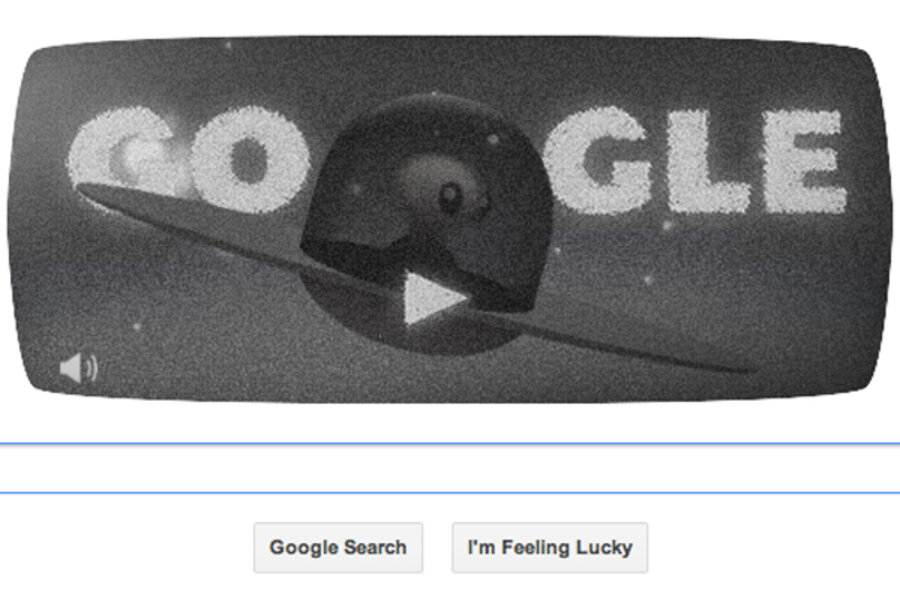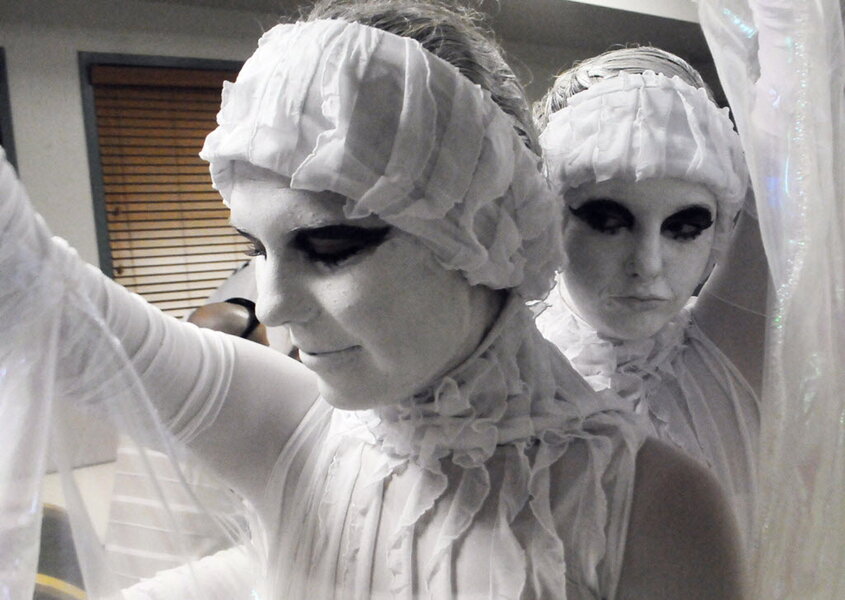Google Doodle: What happened at Roswell?
Loading...
Sixty-six years ago, something fell from the sky into a ranch in Roswell, New Mexico. Today, that object has fallen into an interactive Google Doodle. What happened over six decades ago?
Sometime in early July 1947 (the exact date is unclear), witnesses reported flying saucers cruising over the red-brown desert, the latest reports in a spate of sightings that summer. The scene was set for Mac Brazel, the foreman of a New Mexican ranch near Roswell, to ride out on horseback on one of those July afternoons as he always did, herding his sheep. But this was an unusual ride. Strewn across the property was metallic debris. He told the sheriff’s office, which alerted Major Jesse Marcel from the Roswell Army Air Field, who then alerted the Eighth Air Field. Soon, much of America was aware of a problem on a remote New Mexican ranch.
On the morning of July 8th, Colonel William Blanchard, Commander of the 509th Bomb Group, issued a press release from the local military base that a “crashed disk” had been recovered from the ranch. But just hours later, General Roger Ramey, Commander of the Eighth Air Force at Fort Worth Army Air Field in Texas, some 400 miles from the ranch, issued a correction rescinding the earlier release. The debris was from a surveillance balloon, and the Roswell Military base had made a terrible error, it said.
It looked, no doubt, like a cover-up. And so the world set about picking up threads of what had happened from the fragments that people had seen or heard, sewing it all together into a collective narrative of the Roswell Incident.
Radio journalists in the region said that the FBI annulled their broadcasts of reports from the ground. A local funeral director, Glenn Brown, said he received unusual calls from an air field officer about how to preserve damaged bodies, as well as order for two small and sealable caskets. Residents said that the army had been seen tugging alien bodies – four of them, with bulbous heads and eyes – out of the rubble and alleged that the UFO and its alien cargo had been scooped up and ferried quietly into Area 51, the ultra-secretive military base in Nevada. Some had photos.
For a time, what had happened at Roswell – or what was believed to have happened there – was somewhat forgotten. But in 1978, journalist Stanton Freedman interviewed Marcel, the army officer who had alerted the Eighth Air Force to the crashed object. Marcel told a different story than the one the army had officially put forward at the time. The debris, he said, had been like nothing he’d never seen before: lightweight but dense, and inscribed with strange drawings, like hieroglyphics.
And so interest in the happenings resurged. Throughout the next few decades, other witnesses, from army personnel to local residents, would come forward with their own stories of having been intimidated into participating in a government coverup. In 1984, the Majestic-12 Papers – likely forged – were leaked to the press, detailing how the government had in several incidents found alien wreckage in the southwestern US and had mopped it all up, lest the public find out what it was not supposed to know: we are not alone.
But in June 1997, the US Air Force released a 231-page report titled "Case Closed: Final Report on the Roswell Crash.” The alien bodies that witnesses had reported pulled from the debris had been anthropomorphic test dummies, it said. This was a surveillance balloon, part of the government’s top secret Project Mogul program, which quietly sent skyward high-altitude balloons to detect sound waves from Soviet bomb tests, it said. Clandestine? Yes. Aliens? No.
But that did not settle the matter. Roswell still celebrates its spot in alien history with annual festivals. Alleged alien autopsy footage has appeared. Conferences have been held – sometimes by UFO societies, but other times not. In May, six former US legislators convened a panel in D.C. on putting an end to a global “truth embargo” on the existence of aliens.
Today’s Google Doodle adopts a unskeptical attitude toward the incident. Constructed like a point-and-click adventure game, the Doodle allows players to mouse an alien that has just landed in the New Mexican desert around a ranch, piecing together the parts of his blown-apart saucer and fly away from Earth. It is an imaginative take on an incident that has captured the American imagination and that has thrown into stunning relief its tremendous capacity for ingenuity, for dreaming – or, perhaps, for piecing together the truth.







